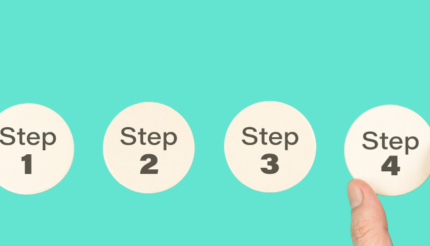Online marketing is an excellent tool to build relationships and acquire new clients. However, simply spreading your message online is not enough. You need advertising to make sure your message reaches a wide audience.
Advertising can be very powerful, regardless of the medium used. You can target traditional forms of electronic media such as TV and radio, or go with visually appealing signage and adverts in magazines, or stick to the cyber world with Google and social media ads.
Some people may say it’s risky, and it can be if you don’t do it right. Make sure you always test and measure the reach of your messages and channels to gauge the responses received before launching further expensive campaigns.
Even if you have a decent budget for advertising, it’s wise to start small. As Brad Sugars, ActionCOACH founder and CEO, says, you want to begin with the smallest radio station that has a similar target audience to your business and run your ads for the smallest costs. The same is true for billboards, TV, or social media. Find out what angles work first and only then invest in excellent production and a wider reach.
With that in mind, let’s have a look at the advertising options you can begin with and what you should know about each channel.
Web Advertising

In this category, the most popular forms of advertising are Google ads and social media ads (Facebook, LinkedIn, Instagram, etc). Social media networks have excellent targeting features, so make sure you use them to send the right message at the right time to your potential clients. Make sure your ads are being run on the right websites where your target audience can be found.
In this category, ‘follow me advertising’ (also known as ad remarketing or behavioural retargeting) is one of the most powerful. These are the ads that are presented to you as you move around on the internet, especially after you’ve used search engines to look up something about a specific product, brand, or industry.
To get the most out of your advertising budget, make sure you communicate the value of your offering instantaneously. People take less than a second to decide whether or not to click on an ad, so the content must be eye-catching, compelling and easy to understand in order to make a solid impact.
- Here are 5 top tips on how to get the most out of web advertising:
- The image you use can change the response you receive. Test out different pictures until you find one that triggers the best reaction.
- What people see in the ad must fit what comes next. Whatever expectations you create with the ad, your landing pages should meet them.
- Target as tightly as possible; promote different ads for various audiences categorised by age, interests, behaviour, and country (if applicable).
- Scale slowly (at a maximum of 10x) to make sure you spend your money on the best-performing ads.
- Track the progress, test and measure every step of the way to optimise your ads continuously and increase the return on investment.
Web advertising can be challenging. Luckily, you can find plenty of information online. Start by reading books and watching YouTube videos. Or you can hire an advertising professional to obtain the best possible results.
Besides ads, you can also advertise your business using:
- Directories (most of them listed by industry or geographical areas)
- Rating sites (similar to advertising: get your ratings up – if necessary, buy a package where you can push yourself to the top)
- Trade Journals (be there up front, not at the bottom of the list)
- Classifieds (both online and offline)
Signage and Poster Campaigns

Signage on your building is vital to build trust and make it easy for people to find the physical locations of your business. Ideally display more than just your company name and contact information. Make it clear that people know what you do and for whom.
Posters, on the other hand, serve a specific purpose, perhaps to advertise an upcoming event. You don’t use them to convince people to buy from you. They’re best used to grab attention and remind people that you’re there.
Magazines

Adverts in magazines work because people are interested in the content published in the magazine they’ve paid for or have subscribed to. That’s also the reason why ads in such publications are expensive.
When you’re just starting, small local magazines might be more lucrative than prominent publications. In some cases, you can even add an article with your ad to get more visibility. When a magazine publishes an article about you, aim to buy multiple units and use them to spread the word about your business.
When it comes to magazine ads, the rules are pretty simple: the right-hand page is better than the left-hand page, and the outside beats the inner space. Some magazines charge a premium rate for the best pages. It’s money worth paying because you get more views.
Before deciding which magazines to advertise in, do the maths based on the timeframe of the magazine’s ‘life’ to estimate how much value you can get from the publication — the return on investment for the advert depends on how frequently the magazine is published. Keep in mind that folks often keep magazines a lot longer, so you can reach people for months or even years with a short series of ads.
Newspapers

The rules for writing and placing adverts are similar to magazine ads. The secret is that the only marketing which works is consistent marketing. In other words, a small ad every day is better than a big ad once a year.
Another thing to remember about newspaper adverts is that the target audience for print is ageing, so you should ask what percentage of the budget is going online and how much offline when signing a contract with any publication.
Radio and TV

Radio is one of the best advertising channels. Like with magazines, people choose the station and rarely jump between radio stations during commercials. Most of them listen through the ads, so if you manage to turn them into conversations with your audience, you could see an excellent response.
The trick is to find the right station, one with which you share the largest target audience. Remember to ensure that the station is geographically suitable for your business needs.
On television, advertising is even more targeted than radio. Plus, television encourages trust. The common perception is that if you advertise on TV, you must be a large company and it’s worth paying attention to what you say.
Another advantage comes from streaming networks as they can help you communicate with far more targeted audiences than traditional television.
As with all other channels, test it out and measure results before investing in expensive commercials that run on big television networks. Ideally, hire a professional team to help you try different versions of your message and see what works. You could start with mini trials on social media or YouTube to increase efficiency and measure effectiveness.
A Word on PR
PR can be anything, from an awards submission to having your story picked up by a newspaper. Make a list of all awards in your region/industry and submit your company in order to build trust. Winning awards tends to have a snowballing effect and often leads to winning further awards as recognition and reputation grow.
Remember that PR builds upon itself. You might not jump to national coverage right away. When working with journalists, start small. Get the article in a small magazine, then promote it to get more visibility. If you give the journalists the right angle, you have more chances to capture their attention and convince them to write about you.
Make a list of journalists who cover your industry and build relationships with them. Treat them like strategic partners — help them when they need information from reliable sources, communicate with them regularly, and invite them to your industry events.
It’s essential to remember that the best PR moment isn’t when the story runs. How you repurpose that story to increase reach and build trust matters far more than the story itself. Place these articles in a brochure or your marketing collateral and link videos to your website to increase reach.
What’s Next?
Take a closer look at all the opportunities that advertising brings to the table. Remember, this is a numbers game, so be committed and consistent. Narrow down to one or two channels that will work best for your business and start with them.





